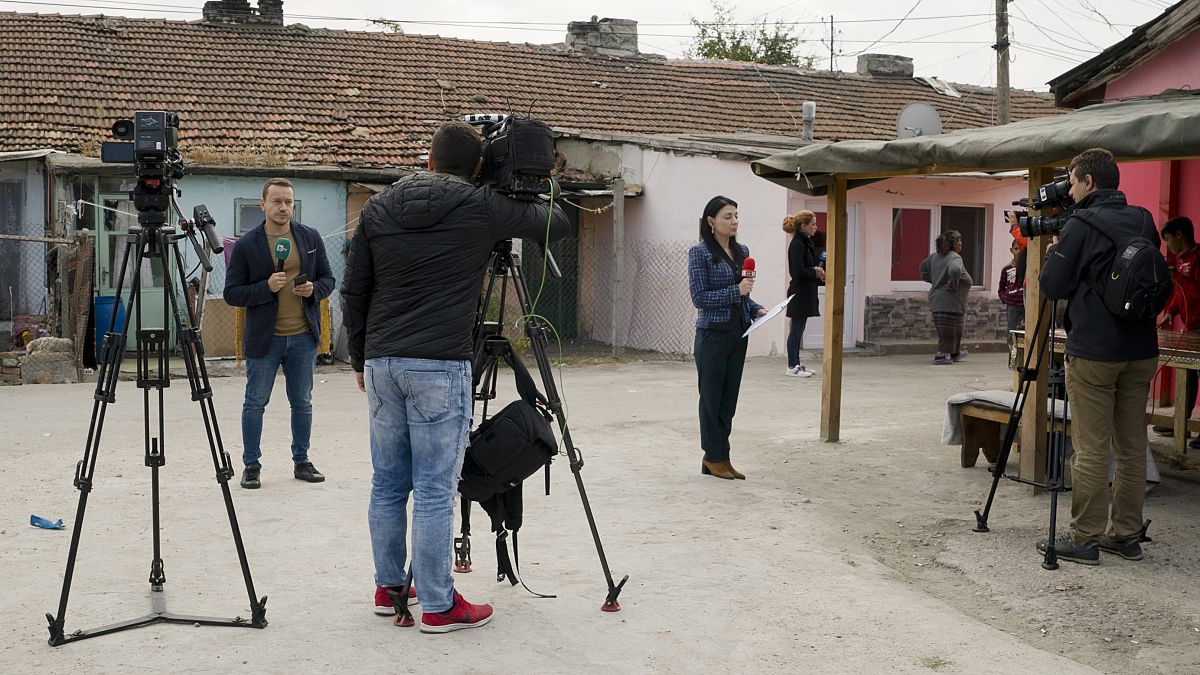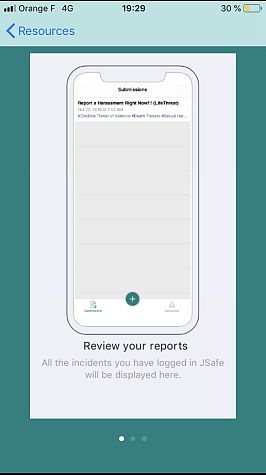2 out of 3 women journalists worldwide say they have been threatened or harassed online at least once. A new app is there to help them.
While safety is a concern for all journalists, female reporters often face unique challenges in doing their jobs.
A new app intends to help them fight against harassment, bullying and assault.
But can it make a difference and if so, how? Euronews takes a look.
What's the situation?
A recent survey by the International Women's Media Foundation found that two out of three women journalist respondents worldwide said they had been threatened or harassed online at least once.
58 per cent indicated they had been threatened or harassed in person, while 26 per cent indicated they had been physically attacked.
Elodie Vialle, an online harassment expert and Knight-Wallace Fellow at the University of Michigan, told Euronews that online harassment "led to self-censorship" of journalists and "undermined press freedom." Because of it, journalists "may think twice before covering certain topics," Vialle said.
Nearly one-third of female journalists consider leaving the profession due to online attacks and threats, the survey found.
Therefore, Vialle said, online harassment is not only a safety issue for journalists but also a "threat to the integrity of our public life" and a "menace to our democracy."
How does the app work?
The new app, JSafe, allows users to report incidents - both online and in the field - through a submission form.
Women journalists can upload attackers’ email or social media handles, providing photo or video evidence.
They can also alert the app to varying levels of threats - from "minor abuse" to "sexual" or "physical" threats.
The app aims to respond to urgent requests within 24 hours, but for immediate physical threats, JSafe recommends contacting the police.
Upon request, JSafe will also provide legal and psychological support to users through the Coalition for Women in Journalism.
Speaking to Euronews, app founder Kat Duncan of the US-based Reynolds Journalism Institute said she came up with the idea "after talking to a group of women journalists."
As harassment and bullying took centre stage in the discussion, Duncan decided that she wanted to create something that could help women in the industry getting the support and resources they needed.
The app is currently in a testing phase and Duncan hopes it will be made available online to the public this summer, depending on users' feedback.
Women journalists interested in testing the app can register by filling out this form.
Are there any precedents?
In 2015, the International Women’s Media Foundation had launched Reporta, a new app designed to provide a safety net for journalists reporting from dangerous places.
But security experts raised concerns that the app might be compromised by hackers - including oppressive governments and criminal networks - who stalk journalists and their sources, the International Journalists Network reported.
The app does not appear to be in use anymore.
Duncan told Euronews that the goal of J-safe developers was to make the new app "as safe as possible," by avoiding any kinds of bots and trolls while hosting it on a secure server.
Other apps also exist for women's safety in general - not just journalists.
Circle of 6, for instance, lets users pick six trusted connections to send them preset messages with GPS coordinates, notably in situations of emergency.
What else can be done?
Duncan told Euronews that an app was a "step in the right direction" rather than a solution to the endemic problem of harassment and bullying of women in the media industry.
"An app can make a difference," Vialle said, notably when it comes to documenting the cases. "But much more is needed," she insisted.
Awareness-raising measures in newsrooms are key, the expert told Euronews. "Just like there are fire protocols, the media industry needs online harassment protocols so that staff know exactly what to do when this happens," she said.
Instead of flagging each and every tweet or post, a broader dialogue with social media platforms is also essential, Vialle continued,

